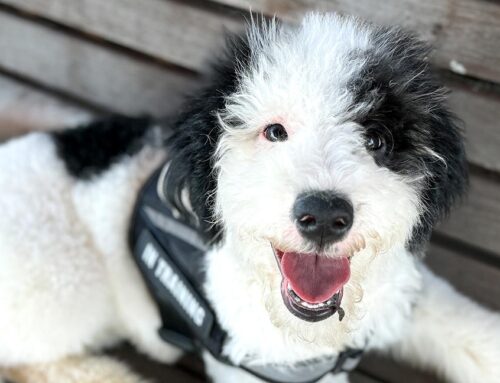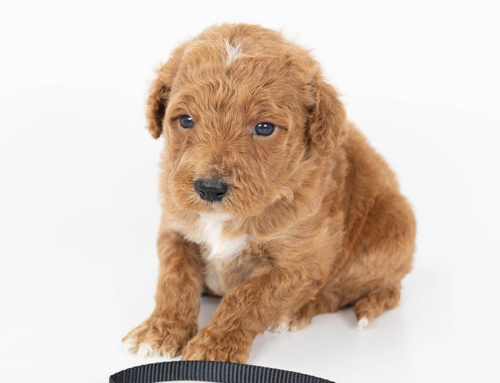How to Train a Sheepadoodle: Expert Tips for Success
I’ll be honest—when I first started breeding Sheepadoodles, I thought I knew what I was getting into. Old English Sheepdogs crossed with Poodles? How hard could it be? Well, learning how to train a Sheepadoodle changed everything.
After working with hundreds of Sheepadoodle puppies and watching them grow into incredible family dogs, I’ve picked up some tricks that actually work. If you’re bringing home one of these adorable troublemakers (and I say that with love), knowing how to train a Sheepadoodle is key to avoiding chaos and building an incredible bond.
Why These Dogs Need a Different Approach
Here’s the thing about Sheepadoodles—they’re basically furry little geniuses with the attention span of a goldfish and the energy of a toddler who just discovered sugar. They get their smarts from both sides of the family tree, which means they can learn anything… but they’ll also figure out how to open your cabinets and steal the dog treats.
The herding instincts? Oh boy. Don’t be surprised if your Sheepadoodle tries to “organize” your kids at the park or gives your cat unsolicited life advice through gentle nudging. And here’s what took me a while to figure out—these dogs have feelings. Big feelings. Yell at them once, and they’ll remember it for weeks.
What Actually Works (Learned the Hard Way)
One of the first lessons in how to train a Sheepadoodle is socialization:
 Get Them Out in the World Early (But Be Smart About It)
Get Them Out in the World Early (But Be Smart About It)
I used to think socialization meant just letting puppies meet other dogs. Wrong! Your Sheepadoodle needs to experience life before they decide the vacuum cleaner is their mortal enemy.
Between 8-12 weeks, I make sure my puppies experience different textures under their paws, hear everyday household sounds, and get used to being handled. The key is keeping it positive—no throwing them into the deep end. One overwhelmed puppy experience can create weeks of anxiety.
Keep Their Brains Busy (Or Pay the Price)
If you want to master how to train a Sheepadoodle, you’ll need mental stimulation. Trust me on this one—a bored Sheepadoodle is a destructive Sheepadoodle. I learned this after coming home to find one of my dogs had somehow opened three different cabinets and created what I can only describe as a “treat explosion” in my kitchen.
Now I’m obsessed with puzzle toys and hide-and-seek games. Five minutes of brain work tires them out more than a half-hour walk sometimes. My go-to is hiding treats around the house and letting them “hunt.” Works every time.
Start Leash Training Before They Get Strong
Another non-negotiable part of how to train a Sheepadoodle is leash training early. A full-grown Sheepadoodle who never learned leash manners will take you for a walk, not the other way around. I’ve seen grown adults get dragged down the street—it’s not pretty.
I always start with a good harness (saves their neck and your shoulder) and teach them that pulling means we stop moving. Period. It takes patience, but once they figure out that walking nicely gets them where they want to go, you’re golden.
 Handle the Herding Thing Gracefully
Handle the Herding Thing Gracefully
Some of my Sheepadoodles are natural-born sheep dogs who’ve never seen a sheep. They’ll try to herd your kids, your other pets, sometimes even you. I’ve watched them circle toddlers like tiny, fluffy cowboys.
If you’re wondering how to train a Sheepadoodle with herding instincts, the trick isn’t to get mad about it—it’s just who they are. Instead, I teach a rock-solid “leave it” command and give them something appropriate to do with that energy. A good chew toy works wonders when they get mouthy.
Potty Training: Stay Cool and Carry Treats
Potty training is a huge part of how to train a Sheepadoodle in the early weeks. Sheepadoodles are smart enough to learn where to go potty in about a week. They’re also stubborn enough to hold out for better weather, more interesting smells, or whatever else strikes their fancy.
I take puppies out constantly—every hour or two—and I make going potty outside the best thing that ever happened to them. Treats, praise, the whole celebration. Accidents happen, and when they do, I just clean up and move on. Getting upset about it just makes everyone stressed.
Stop the Jumping Early
These dogs LOVE people. Like, really love people. Like, “I haven’t seen you in five whole minutes and I must express my joy by launching myself at your chest” love people.
I ignore jumping completely—turn away, no eye contact, no reaction. The second all four paws hit the ground, it’s party time with treats and attention. It takes consistency, but it works.
The Real Secret
After all these years, here’s what I’ve figured out: Sheepadoodles just want to make you happy. They’re not trying to drive you crazy (even though they’re really good at it). They need clear rules, lots of patience, and someone who appreciates their goofy, loving personalities.
When families follow the basics of how to train a Sheepadoodle and keep training fun instead of stressful, I watch these dogs transform into incredible companions. They’re worth every bit of effort you put in.
If you’re thinking about getting a Sheepadoodle, or you’re in the thick of puppyhood right now, hang in there. The crazy puppy phase doesn’t last forever, and what you get on the other side is pretty amazing.
P.S. – We actually offer some training basics before our puppies go home, just to give families a head start. It’s called our Checkpoint Training Program, and honestly, it makes everyone’s life easier!
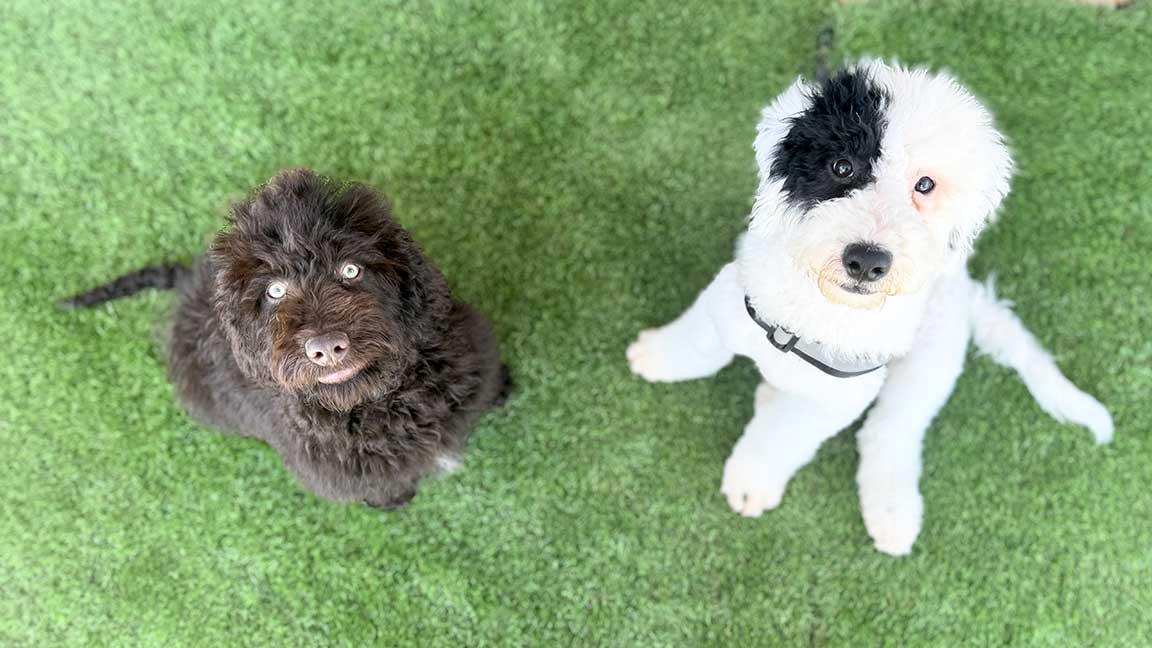
Questions I Get Asked All the Time
How long does it take to house train a Sheepadoodle?
Most of my puppies get the hang of it within 2-4 weeks if you’re consistent. But here’s the thing—they might have the occasional “oops” moment until they’re about 6 months old. Don’t panic if your 4-month-old has an accident; their bladders are still tiny!
My Sheepadoodle is 8 months old and still acts like a crazy puppy. Is this normal?
Oh honey, yes. Sheepadoodles are basically teenagers until they’re about 2 years old. The puppy brain takes forever to settle down. Just keep up with training and exercise—it WILL get better, I promise.
Should I get a male or female Sheepadoodle?
I get this one constantly! Honestly, personality matters way more than gender. I’ve had gentle giant males and sassy little females, and vice versa. Meet the individual puppy and see who clicks with your family.
How much exercise do they really need?
A tired Sheepadoodle is a good Sheepadoodle. I usually tell families to plan for at least an hour of activity daily—but that includes mental exercise too. A 20-minute training session can be just as tiring as a walk around the block.
When should I start professional training classes?
As soon as they’re fully vaccinated! Usually around 12-16 weeks. But don’t wait to start training at home—begin the day you bring them home. The earlier you start, the easier everything becomes.
My Sheepadoodle won’t stop chewing everything. When does this phase end?
The heavy chewing usually peaks around 4-6 months when they’re teething, but some dogs stay mouthy until they’re about a year old. Lots of appropriate chew toys and redirecting when they grab your favorite shoes. They’ll outgrow it, but your patience might be tested first!

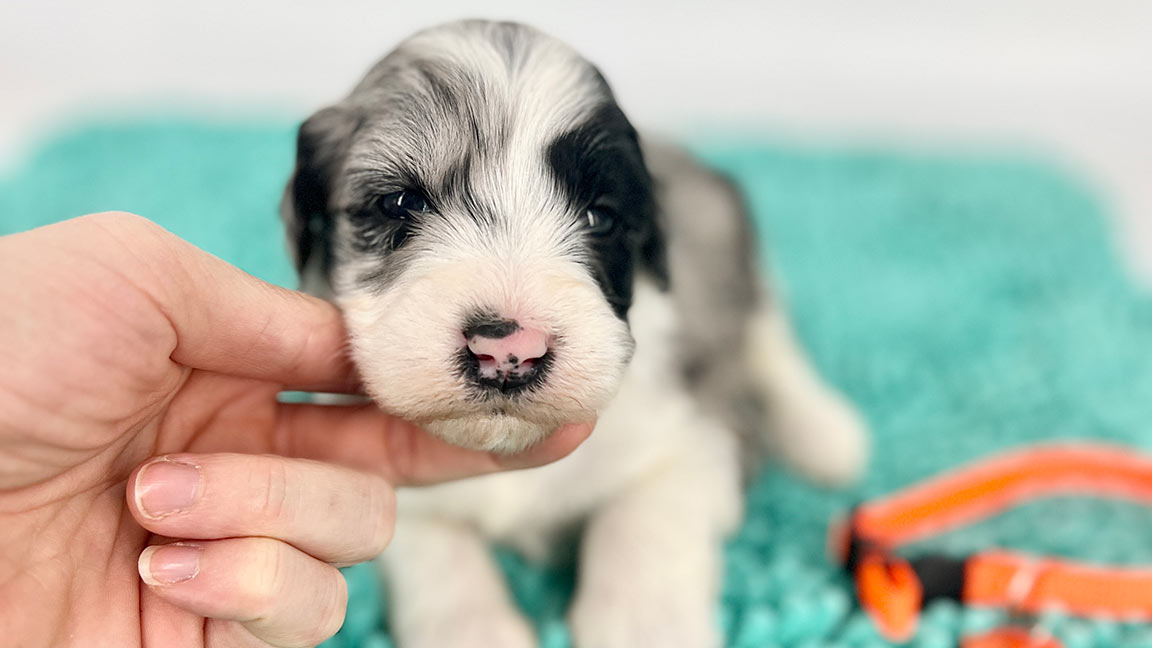

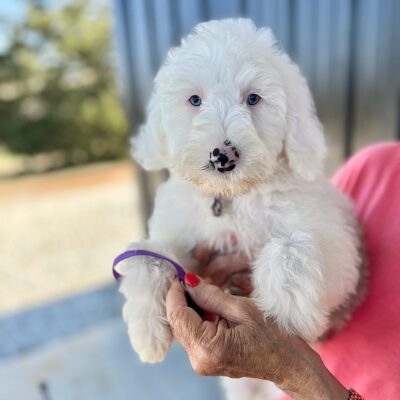 Get Them Out in the World Early (But Be Smart About It)
Get Them Out in the World Early (But Be Smart About It)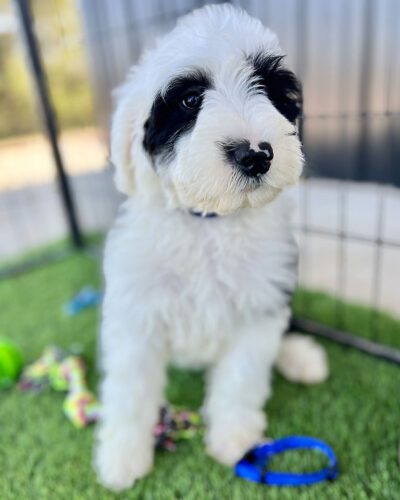 Handle the Herding Thing Gracefully
Handle the Herding Thing Gracefully